Tanzanian safari: Ngorongoro Crater
After our visit to Mto wa Mbu (June 2007 trip to Tanzania), we returned to the lodge for lunch and then hopped back in the vehicles for the drive to Ngorongoro Conservation Area. The road climbed, the air cooled, and when we stopped at an overlook to view the volcanic crater — at 14 miles across, the world’s largest unbroken, non-flooded caldera — a chilly, stiff breeze had some of us reaching for jackets. Hazy conditions prevented good views from the rim, but it didn’t matter because the best views awaited us within the crater the next day. Hint: the picture above.
Our tour leader, Delrene, and the Tauck drivers: Jadim, Mgonja, J4, Renatus, and Raymond. Some of them were amazing spotters and had encyclopedic knowledge of the animals and plants. We were assigned different drivers each day, and different companions from our tour group. Since Dad and I were just two and the cars held six, we were often paired with one of the other three smaller parties on the tour. While we soon had our favorite friends on the tour, it was nice being paired up with different people. On a group tour, you have many opportunities to get to know your fellow travelers. I still correspond with my friend Caroline from California, who along with her stepdaughter and adult granddaughter became Dad’s and my favorite, fun-loving travel-mates.
When we arrived at Ngorongoro Serena Safari Lodge, a low-slung, lodge-style hotel perched on the rim of the crater, we were greeted as usual with champagne and juice, and then a small group of Maasai men and chanting girls entered to perform for us. Their colorful wraps seemed to elongate their tall, lean forms as the young men jumped to astonishing heights.
The girls, who looked very young, wore elaborate, beaded, platter-like necklaces, which they bounced up and down while they chanted. The men hummed a vibrato-like accompaniment.
Our room, like all the others, faced the tree-rimmed crater. For the most part, fog socked in the view, but we could hear the muffled clank of cowbells from the Maasai herds. Although the government tried for decades to make the Maasai give up their nomadic lifestyle, at Ngorongoro their pasturalism is protected along with the wildlife, and they are allowed to graze their cattle in the crater. We would later see young Maasai boys armed only with long spears guarding their herds on the crater floor, where there’s an unusually high concentration of lions and other large predators.
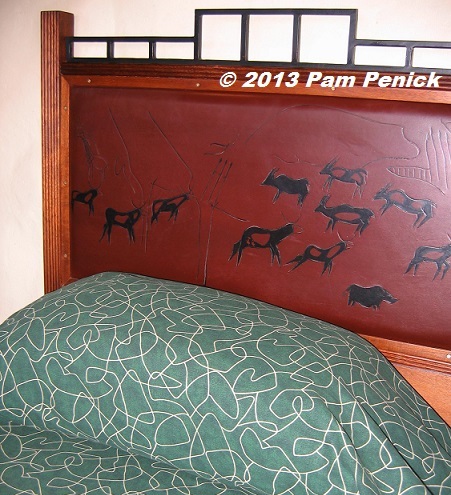
No mosquito nets here. At 6,000 feet above sea level, the elevation kept the blood-suckers at bay.
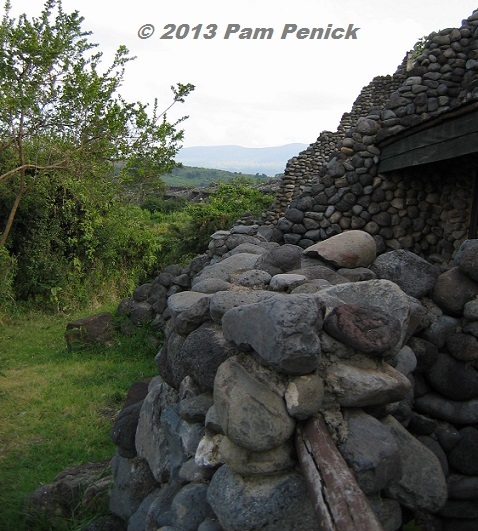
Each room had a walled patio overlooking the forest edging the crater’s rim.
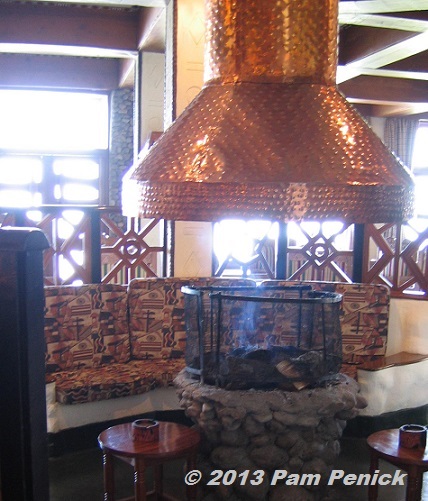
In the lounge, a fireplace was lit to chase away the evening chill.
Early the next morning we got in our vehicles and began the steep descent 1,000 feet into the crater along a serpentine, bumpy, single-lane dirt road that hugged the cliffside. The stomach-dropping view over the edge was, for the most part, obscured by thick fog.
About halfway down, we encountered an overturned ranger or supply vehicle in the road (not a tourist car). Several local men stood next to it. Miraculously, there seemed to be no injuries, and the wreck did not completely block the narrow road, so we were able to continue our descent. It was a sobering sight, however.
Near the bottom, the fog lifted, leaving the rim wreathed in fluffy whiteness. As soon as we reached the crater’s floor, our driver began looking for animals, and not just any old gazelle, of which there were plenty. He was looking for exciting game like lions and rhinos. The latter proved elusive, but the lions were everywhere — and so, it seemed, was every other African animal except giraffes, which need trees for browsing, rather than the open plains of the crater.
When Swahili crackled across the radio — guides use a CB radio to share sightings — and our driver tore at top speed across the dusty, bumpy track, we knew something good had been spotted. It was a recent lion kill. Three juvenile male lions, not 20 feet from the side of the road, were tearing at the remains of a young Cape buffalo.
Stained red with blood, they pulled at the skin and gnawed the bones, getting as much meat as they could from the kill.
They had the beginnings of manes, like a young man’s wispy goatee. They were unfazed by the paparazzi that had gathered on the road beside them.
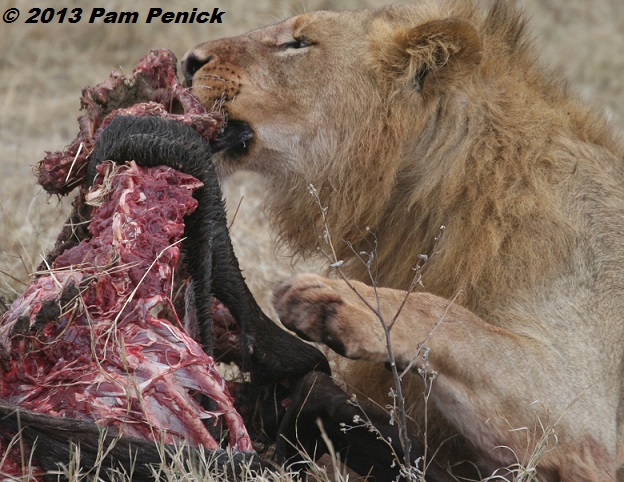
Lions quickly attract a crowd. These two cars contained fellow Tauck travelers. You can see from their hooded jackets that it was cold in the early morning.
One lion rolled back and forth on his back, helping to settle the huge feast, probably feeling as we do after Thanksgiving dinner and pie.
Check out that bloated belly. He wouldn’t need to eat again for three days, our driver told us.
Nearby, a jackal paced impatiently for leftovers.
So did a hyena.
We were mostly silent, only whispering, our shutters clicking. I was aware that the lions could so easily be on top of our open roof in an instant if they wished.
At last the lions could eat no more and walked away. The jackal held its ground, sensing that the lion was too full to give chase.
Wildebeest — tomorrow’s dinner?
Zebras and wildebeests mingled freely in herds or as individuals in the other species’ herd.
Nursing zebra
Grant’s gazelle
Maasai boys shepherded their cattle in the crater, which astonished me after having just seen lions cracking bones in their jaws. While we were not allowed to step out of our cars because of the danger from wildlife (except at a latrine in the forest and at our picnic spot, with guides at hand), these young men were guarding their cattle from lions, hyenas, and cheetahs, armed only with spears. Our guide said that the lions recognize the Maasai and fear them.
Nearby, hippos lounged and lunched along the shore of a shallow lake.
Lilac-breasted roller, one of the most beautiful birds we encountered, and so brilliantly colored against the drab, dry-season landscape. More than 500 species of birds have been recorded in the crater.
Vulture
Marabou stork, also a scavenger
Great white pelicans
Sacred ibis
Egret
Wounded zebra, probably the victim of a lion attack, our driver thought. He speculated that the zebra would not live long because of its blood loss and weakened condition. Another predator would soon get it.
Thousands of wildebeests. Just look at how many animals were out there.
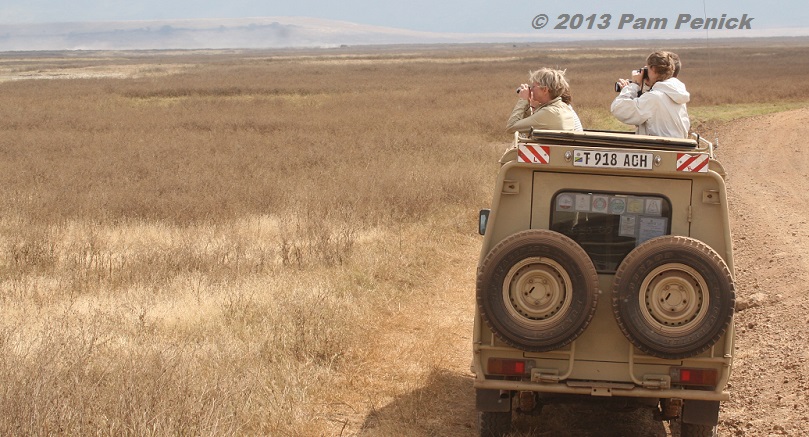
Warthogs were always skittish, but this one was close enough for us to get a good look as it grazed on its knees.
A raft of hippos paid no mind to a flock of flamingos.
These flamingos were napping.
As lunchtime approached, the driver told us it was time for a box lunch, apologizing for the necessity of a rustic picnic down in the crater. He drove us down a very bumpy stretch near the forest, into a secluded glen, where the other cars joined us. We stepped out of the vehicles and were led to — surprise! — a full-service bush lunch. Tablecloths, BBQ hot off the grill, hot dishes, and a full bar. I was impressed!
Dad enjoying the picnic
After lunch, it was getting pretty warm. The fog had burned off the rim. Back on the game-watching trail, we watched a lioness stalk zebras in the grass. She inched closer and closer to the zebras as they walked single-file down a game trail to a watering hole. Finally she sprang. She leaped for the last zebra, but it escaped with a burst of speed, and she padded back up the trail to begin again. I was unable to get a good photo, but it was fascinating to watch.
We spotted only one cheetah on the trip, one that had just given up a chase for a gazelle. It was resting in the grass when we arrived on the scene. See it at bottom right? We hoped it would try again, and we watched for quite a while. Like all cats, however, the cheetah did not perform on demand.
Ngorongoro Crater was the highlight of the trip. I couldn’t believe the concentration of wildlife in one place, the beauty and variety of the animals we saw, and the drama of predators giving chase before our eyes, not to mention the natural beauty of the crater itself.
Up next: A visit to a Maasai village to see what life is like for this semi-nomadic people. For a look back at a tour of Mto Wa Mbu village and a local home, click here.
All material © 2006-2014 by Pam Penick for Digging. Unauthorized reproduction prohibited.


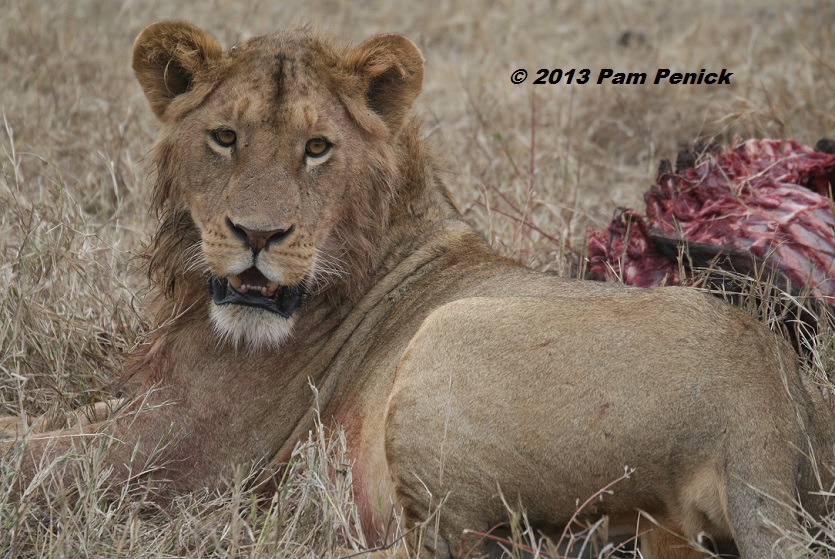
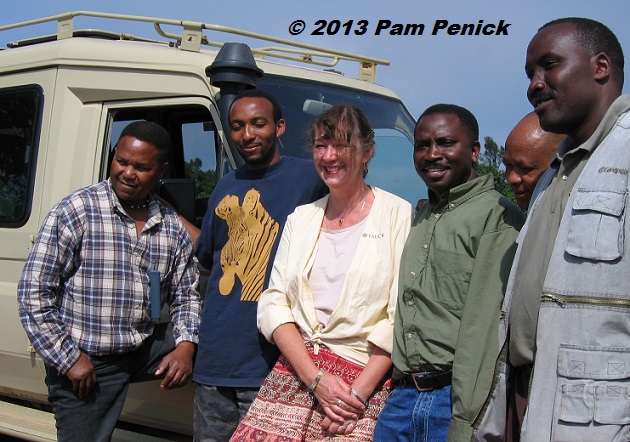
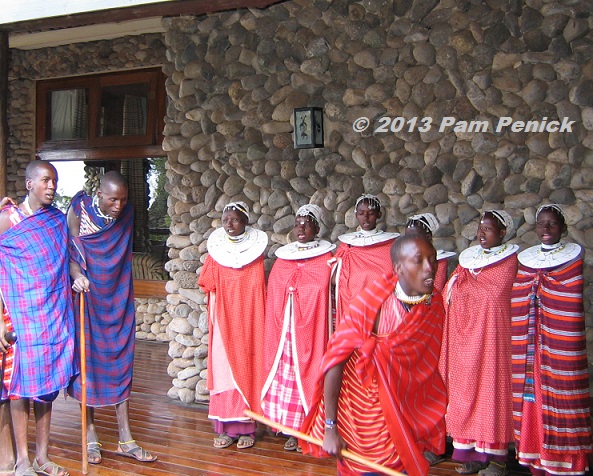
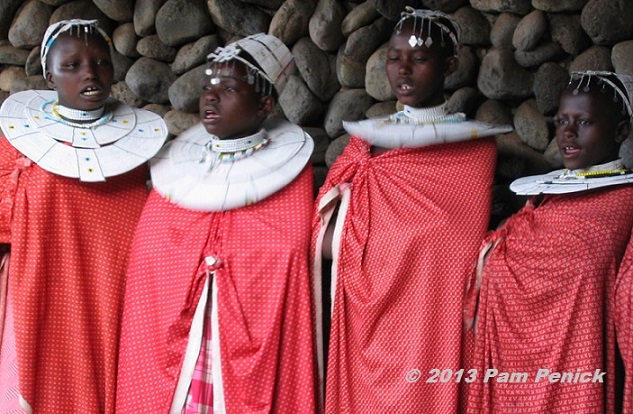
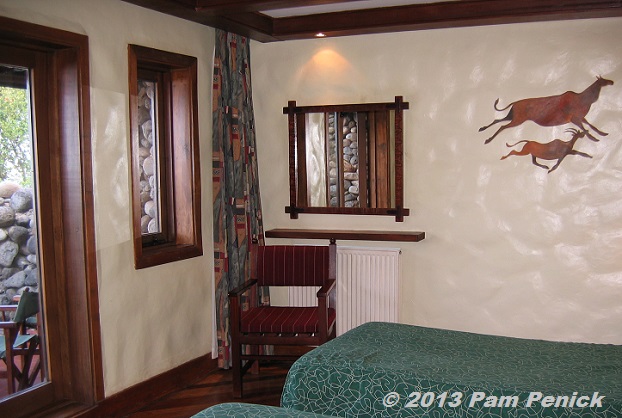
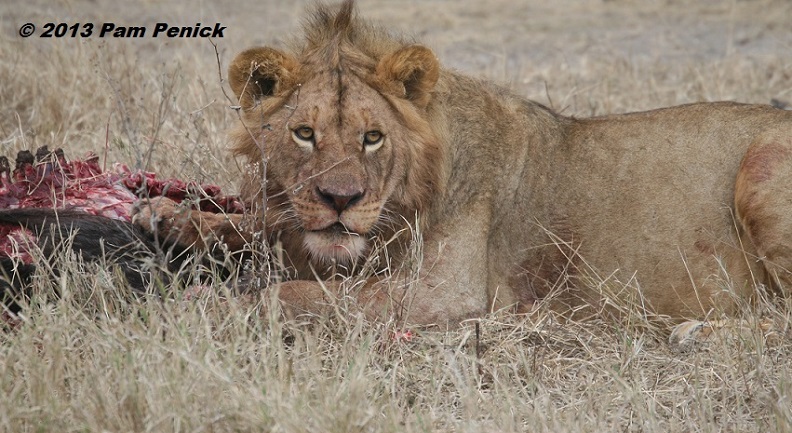
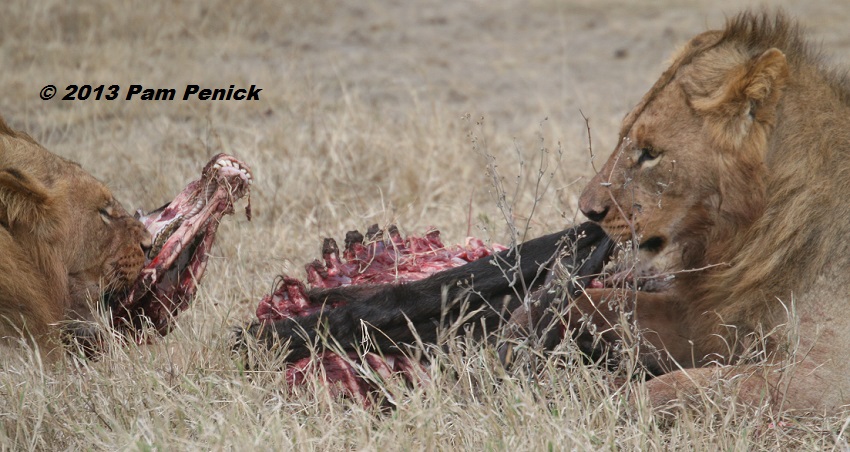
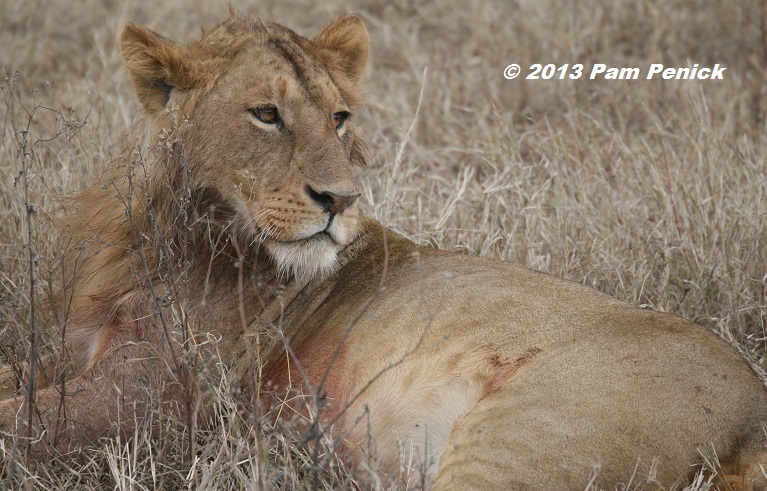
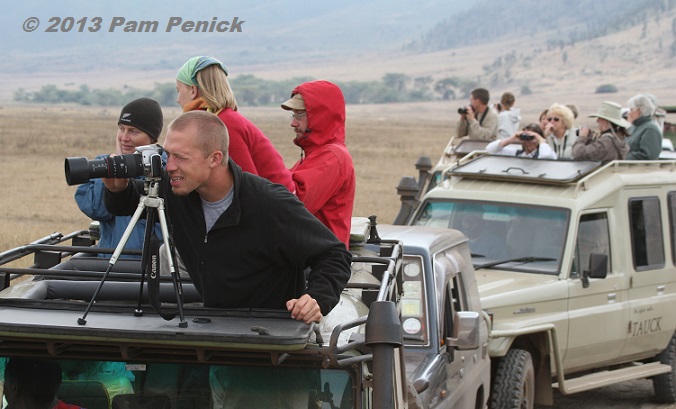
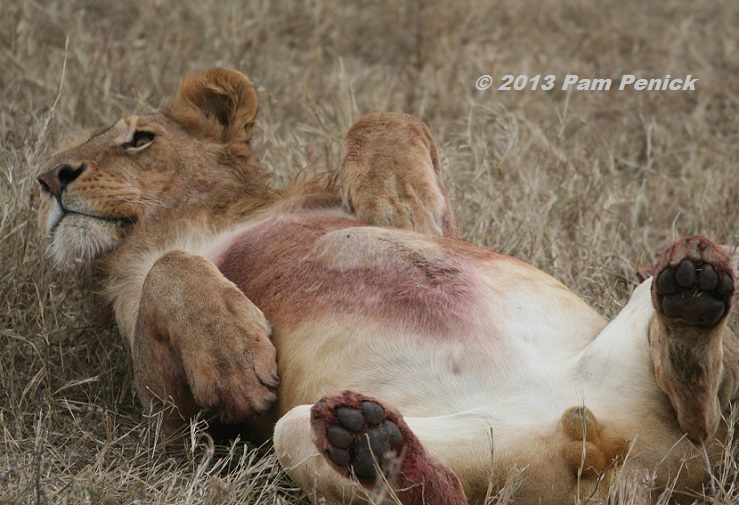
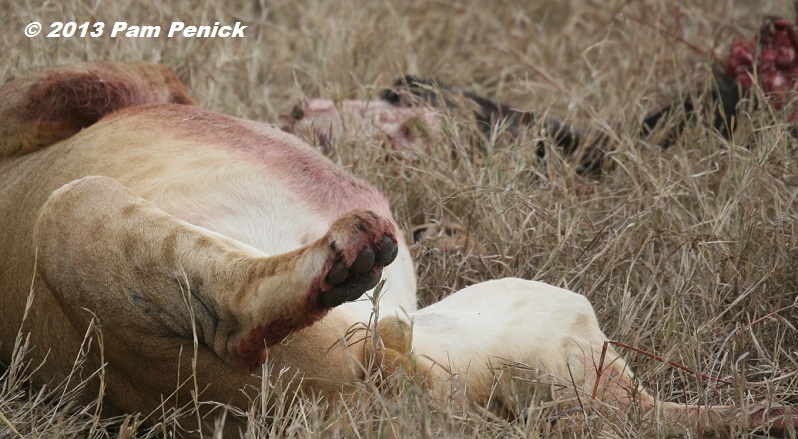
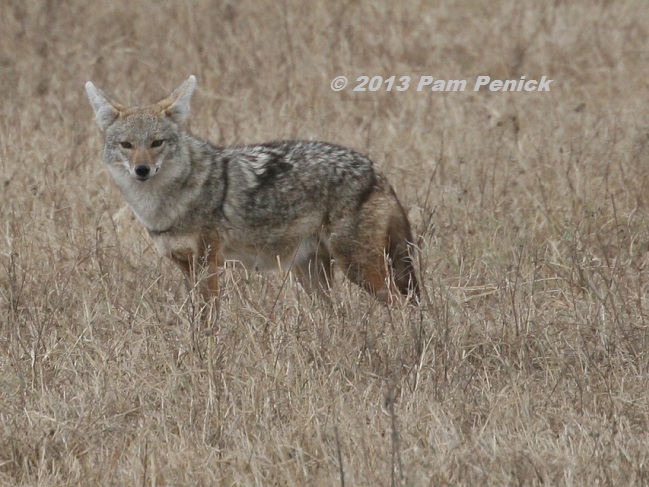
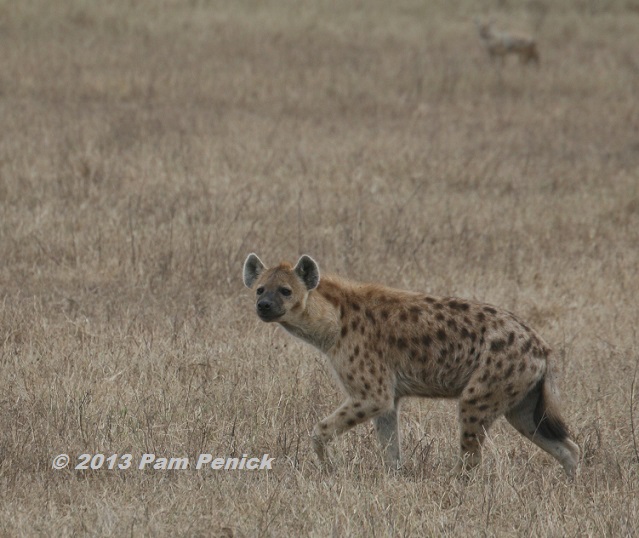
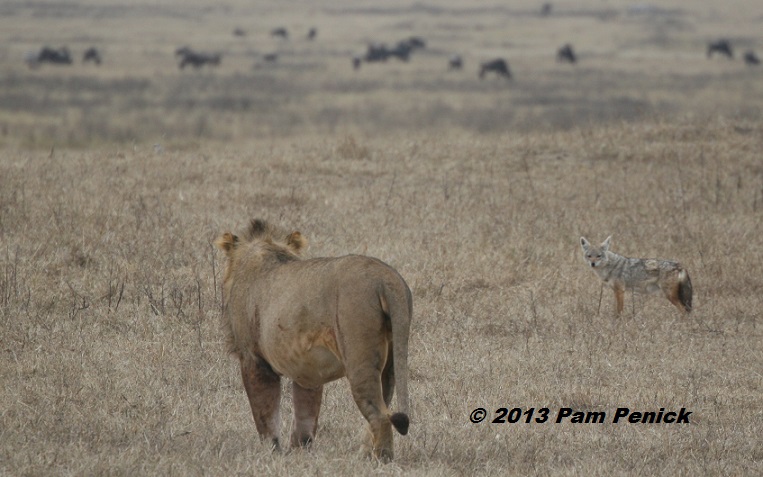
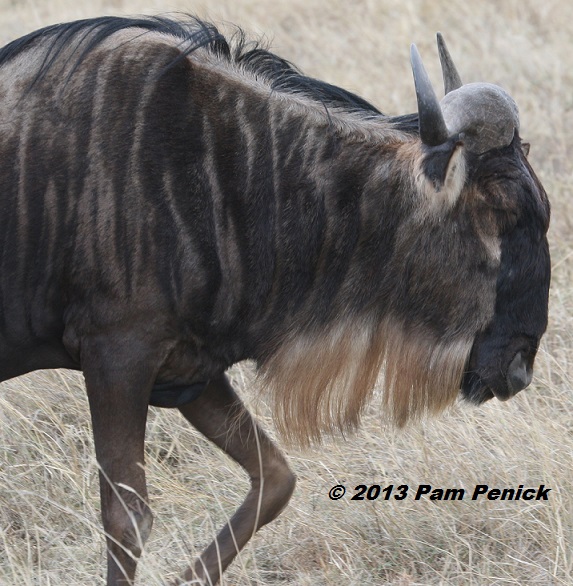
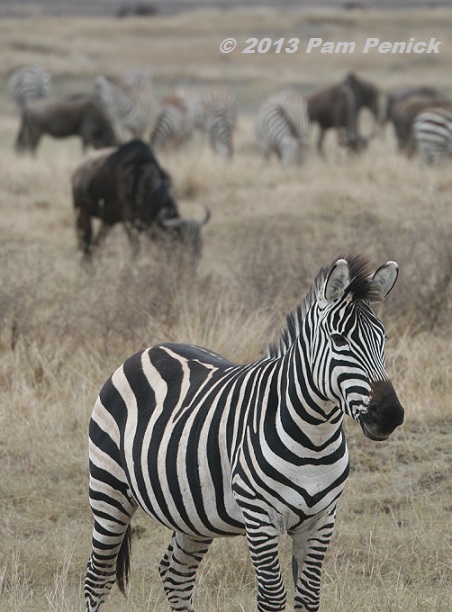
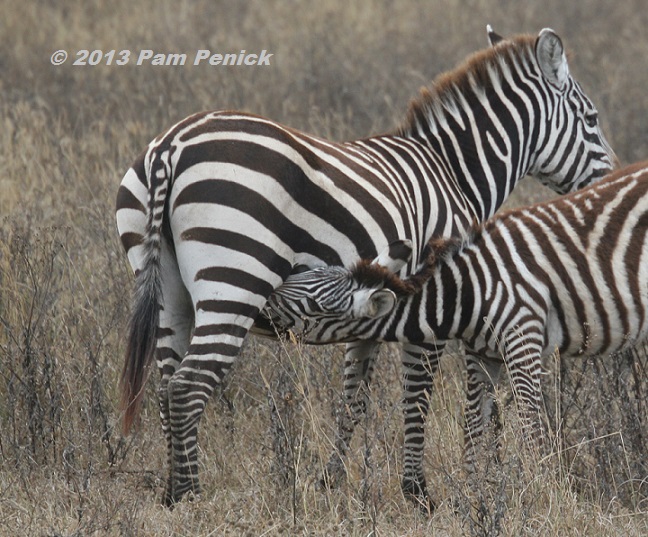
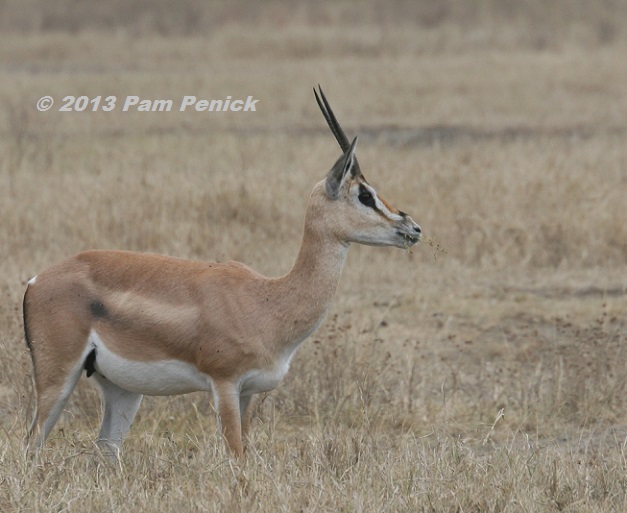
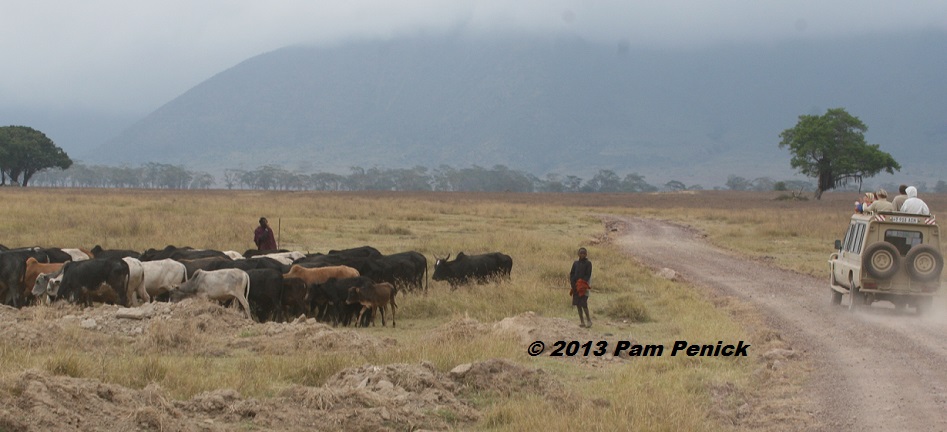
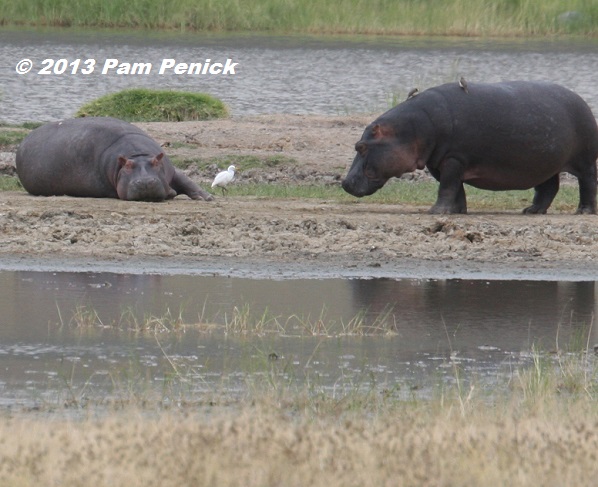
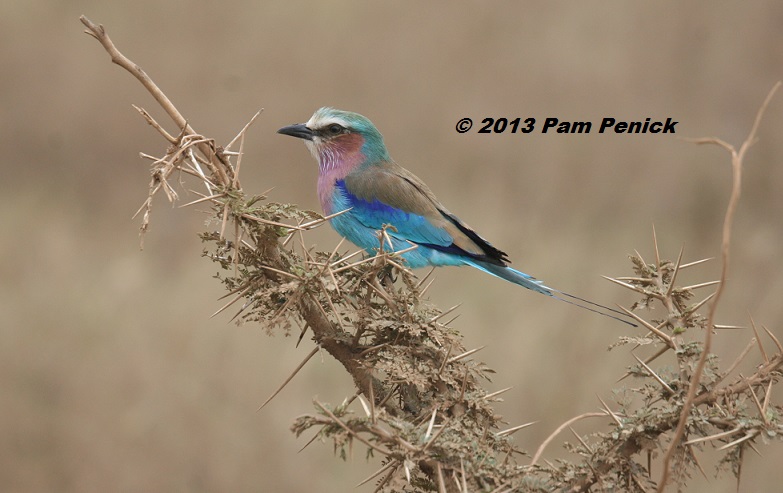
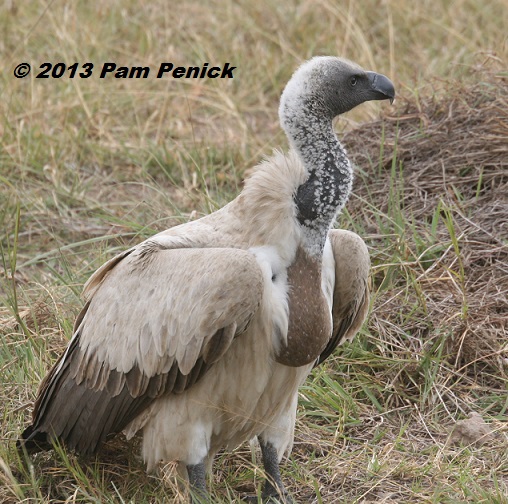
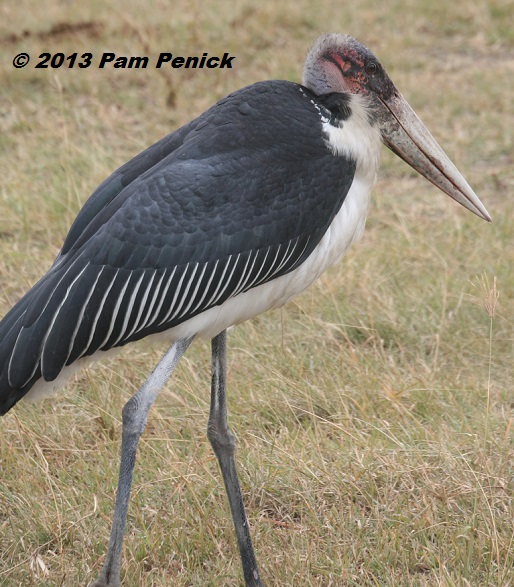
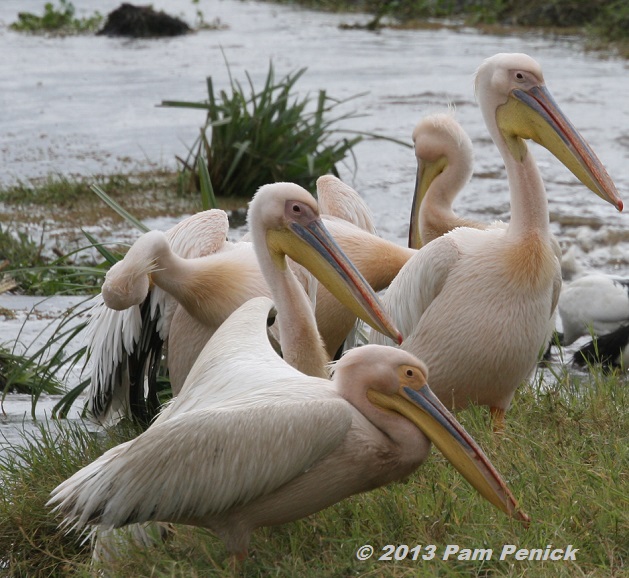
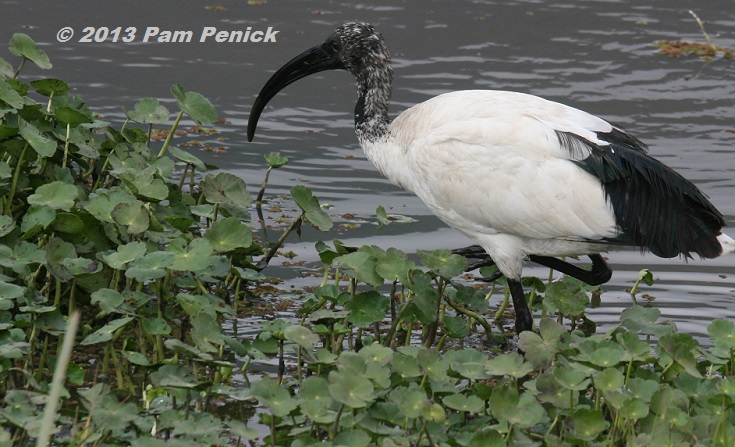
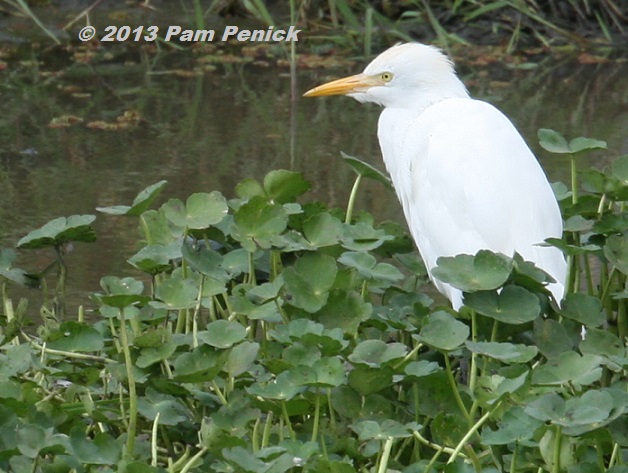
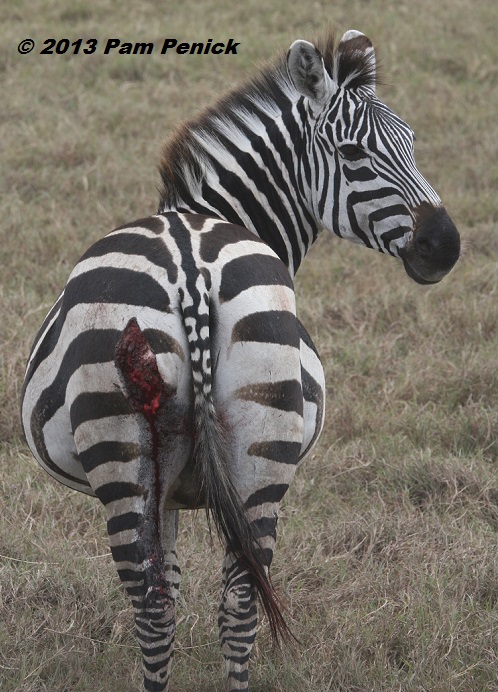
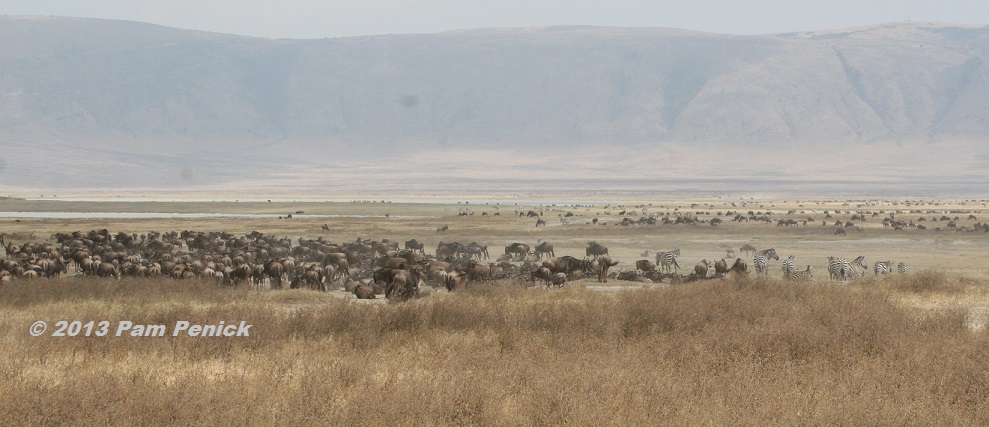
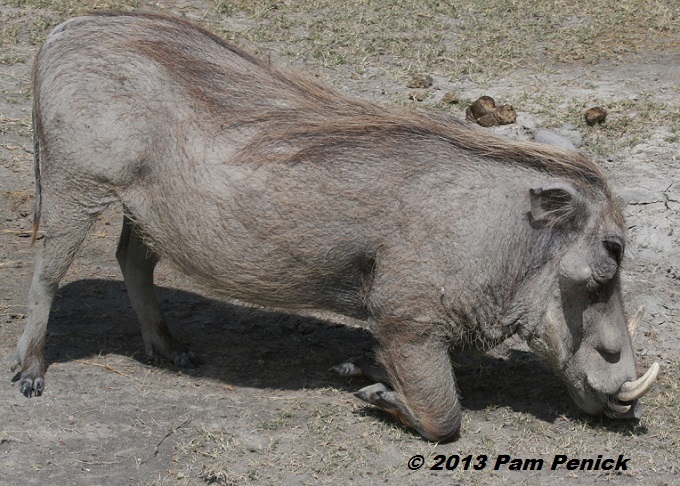
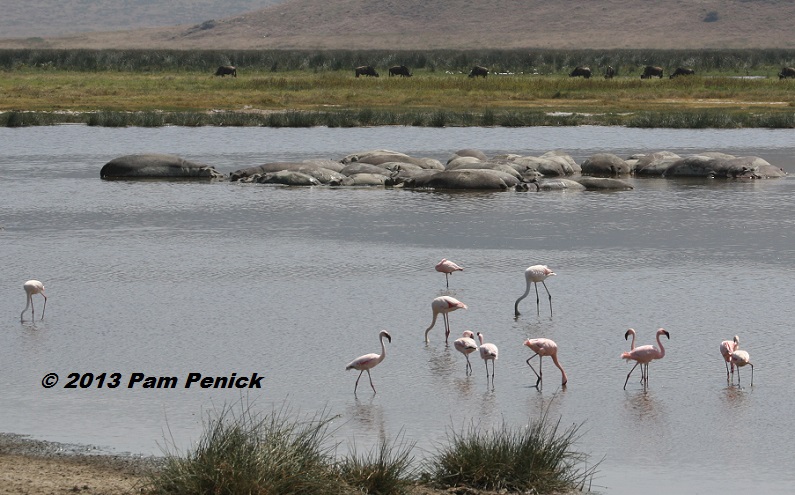
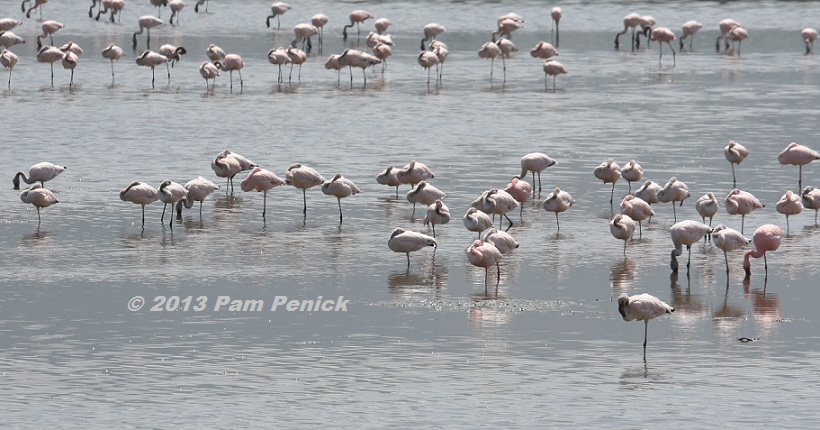
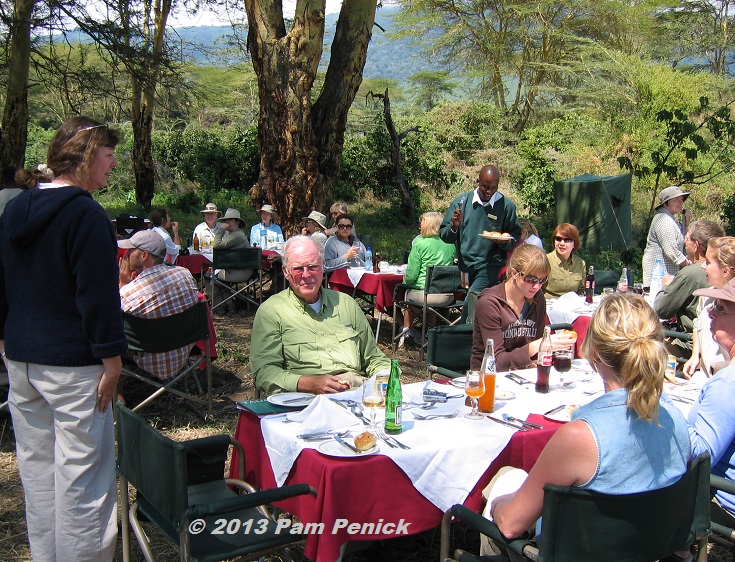
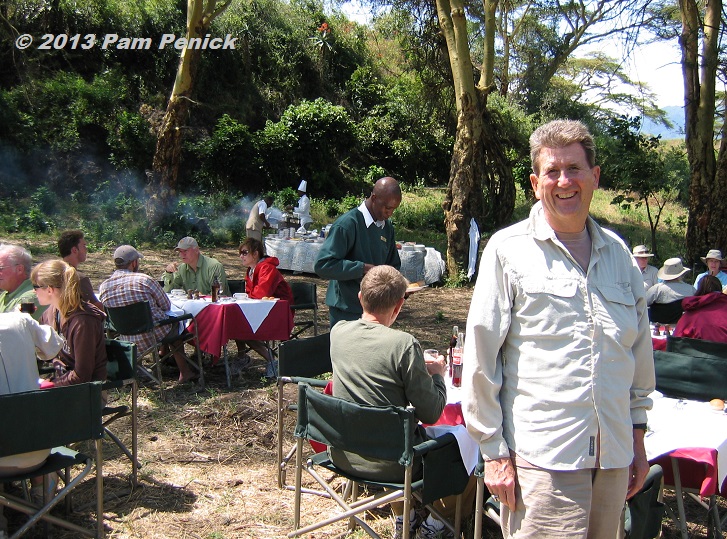
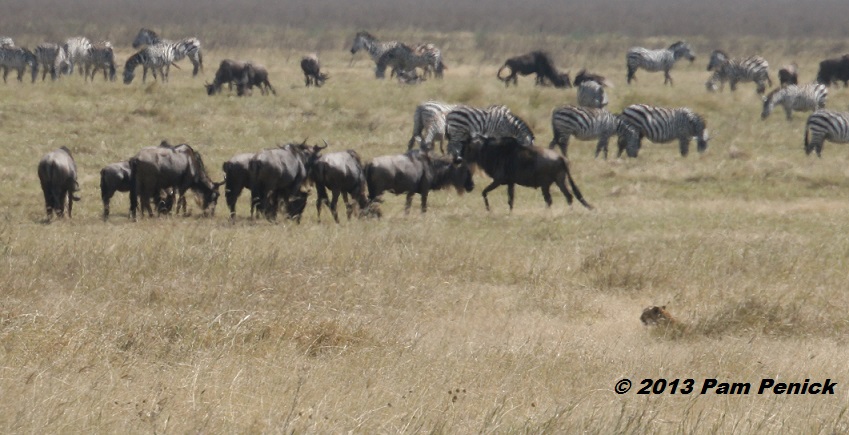

Wow, what a beautiful place. I’ve always wanted to go there and it looks just as I imagined. Interesting you had latrines. We just had behind the vehicle or termite mound! To get to see a kill was great luck indeed. Those lions looked pretty stuffed. What a highlight indeed!
Did you ever have to “kick the tires” on a game drive, Jean? Yes, there were primitive latrines at some of the parks we visited. At other times, like at the surprise picnic lunch, the tour crew set up a portable latrine in a tent. —Pam
What beauty. Also what an unexpected lush lunch you had out in the bush. This is fabulous.
It was! —Pam
So glad you reposted this, my husband and I are headed to Kenya and Tanzania on Friday and these shots just make me all the more excited to board the plane. Thanks, and I hope some of my shots turn out this well.
Have a wonderful time, Sonia! I am sure that you will. —Pam
These travel posts are such a treat! thanks to you it is almost like I have gone on an exotic vacation this winter 🙂
Oh good, Heather. I’m so glad I’m not boring everyone with my travel slideshow. 🙂 —Pam
I too am enjoying these vacation posts immensely. I watch TV nature and travel shows, but for some reason it’s most enjoyable seeing it through your eyes along with your personal experiences.
Ragna
Ragna, like you, I’ve always enjoyed watching nature shows, which is why it was easy to decide on this as my dream trip. I’m so glad to know you’re enjoying the travel posts. —Pam
When you consider all the things in the world a traveler could see, this surely should be at the top of the list.
It was definitely at the top of mine, Les. —Pam